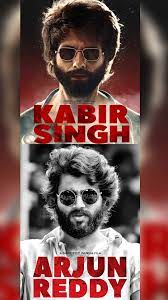STAY CURIOUS
Keep reading to find the excellency out of perfection and skill.
By: Milestone 101 / 2024-09-11
bollywood
The Impact of Bollywood Remakes on the Original South Indian Films
The crossover between Bollywood and South Indian cinema has grown significantly in recent years

Bollywood remakes of South Indian films becoming increasingly popular. These remakes have had a profound impact on both industries, shaping audience expectations, creating new market opportunities, and sometimes even affecting the perception of the original films.
Remakes from South Indian films to Bollywood are not new; they've been around for decades. Classic hits like Himmatwala (1983), a remake of the Telugu film Ooruki Monagadu (1981), or Hera Pheri (2000), which was inspired by the Malayalam movie Ramji Rao Speaking (1989), are prime examples of Bollywood's affinity for Southern stories. These films introduced South Indian narratives to a wider Hindi-speaking audience and shaped the early relationship between the two industries.
However, with technological advancements, better distribution channels, and a growing appetite for diverse content, the influence of South Indian cinema on Bollywood has deepened in recent years. Today, popular remakes like Kabir Singh (a remake of Arjun Reddy) and Drishyam (based on the Malayalam original) have dominated the box office, demonstrating the broad appeal of these stories to a national audience. Bollywood's tendency to remake successful South Indian films has largely been driven by financial motivations. The South Indian market comprising Tamil, Telugu, Malayalam, and Kannada films—has produced some of the most successful films in Indian cinema in recent years.
These films often come with proven box-office formulas, making them low-risk ventures for Bollywood producers who seek to replicate their success. Take, for example, Ghajini (2008), which is a remake of the Tamil film of the same name. Both versions were commercially successful, but the Bollywood version brought the story to a national and international audience, grossing over ₹232 crore globally. This kind of financial reward has encouraged Bollywood producers to continue remaking South Indian hits. While financial gain is an important factor, remakes often spark debates about whether they honor or dilute the original content.
Bollywood remakes sometimes simplify complex narratives or adjust cultural nuances to cater to a broader Hindi-speaking audience. This has drawn criticism from purists, who argue that the remakes do not capture the depth or cultural specificity of the original films. One of the most debated remakes in recent times is Kabir Singh (2019), a remake of the Telugu film Arjun Reddy. Both films share the same basic plot, but the Bollywood version faced backlash for its portrayal of toxic masculinity, something the original was also criticized for, but on a smaller scale. In this instance, the remake amplified certain controversial aspects of the original, leading to a much larger public debate. Another example is Shehzaada (2023), a Bollywood remake of the Telugu film Ala Vaikunthapurramuloo.
While the original starred Allu Arjun in a charismatic performance, the Bollywood version faced criticism for not living up to the energy and flair of the original, despite its commercial ambitions. Interestingly, Bollywood remakes often breathe new life into the original South Indian films, drawing renewed attention to them. When a Bollywood remake becomes a hit, it often piques the interest of audiences who may then seek out the original version. This has helped some South Indian films gain cult status across India, not just in the Southern states. For instance, after the success of Drishyam in Bollywood, the original Malayalam film and its sequels saw a surge in viewership, both domestically and on streaming platforms. This crossover appeal has also opened doors for South Indian actors, directors, and technicians in Bollywood.
Stars like Prabhas (Baahubali), Vijay Deverakonda (Arjun Reddy), and filmmakers like S.S. Rajamouli have found national and even international acclaim, thanks in part to the visibility that Bollywood remakes of their films have provided. In recent years, the scale and quality of South Indian films have surged, particularly with big-budget Telugu and Tamil films like Baahubali and RRR setting new benchmarks for Indian cinema globally. This has led to a perception that Bollywood is increasingly relying on South Indian films for inspiration and content. Movies like Sooryavanshi and Vikram Vedha (2022) highlight this trend, with Bollywood looking southward for strong narratives and blockbuster material.
This dependence has sparked a conversation about the originality in Bollywood cinema, with critics arguing that the Hindi film industry needs to focus on creating original content rather than relying on tried-and-tested Southern stories. While remakes continue to be successful, there is growing pressure on Bollywood to innovate and create its own fresh narratives rather than being perceived as riding on the coattails of Southern success.
Bollywood remakes of South Indian films have had a lasting impact on the Indian film industry, but this trend is also changing the landscape of Indian cinema as a whole. The success of these remakes has led to more collaboration between the industries. Actors, directors, and technical crews often work on both sides of the spectrum, further blurring the lines between regional and Hindi cinema. Moreover, the South Indian film industry has become more confident in producing content for a pan-Indian audience, without necessarily needing a Hindi remake to reach that audience. Movies like KGF and Pushpa were released in multiple languages simultaneously, including Hindi, and succeeded in attracting a national audience, bypassing the need for a Bollywood remake altogether.
The impact of Bollywood remakes on original South Indian films is multifaceted. While these remakes provide financial opportunities, introduce Southern stories to a wider audience, and facilitate cross-industry collaborations, they also raise questions about the creative integrity and cultural adaptation of the originals. As the boundaries between Bollywood and South Indian cinema continue to blur, the future may see even more integration between these two vibrant film industries, ultimately enriching the cinematic landscape of India
2022 © Milestone 101. All Rights Reserved.